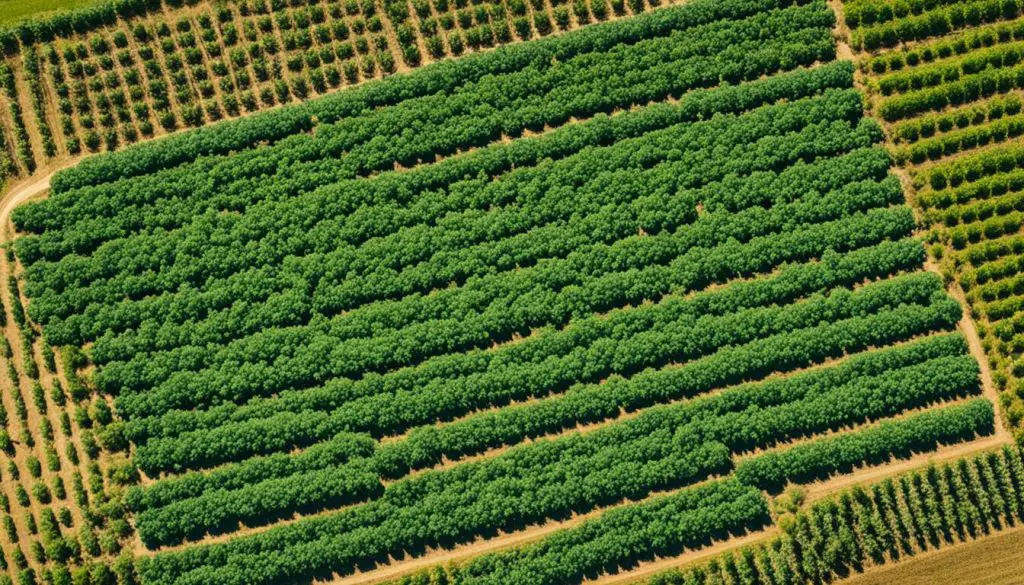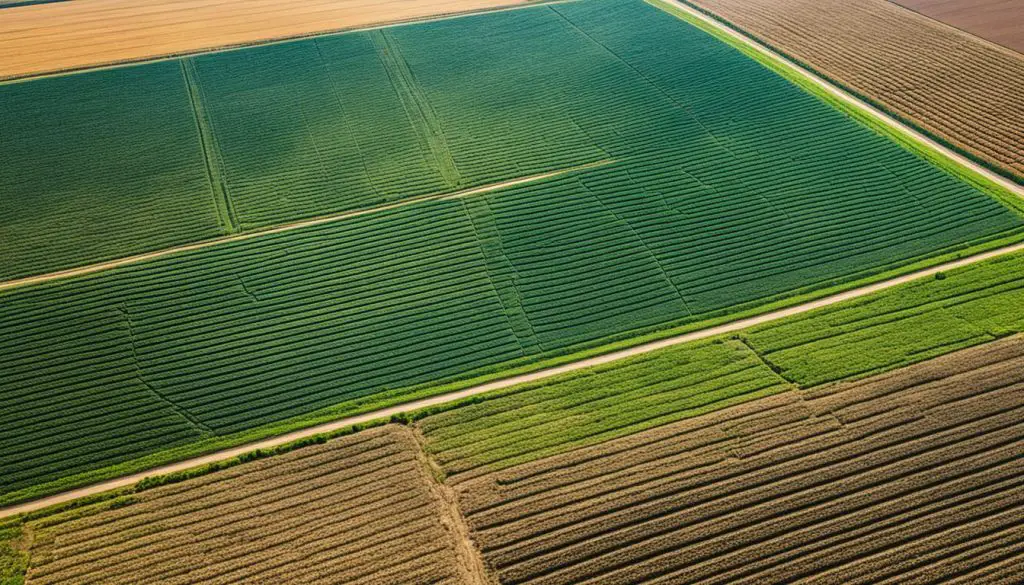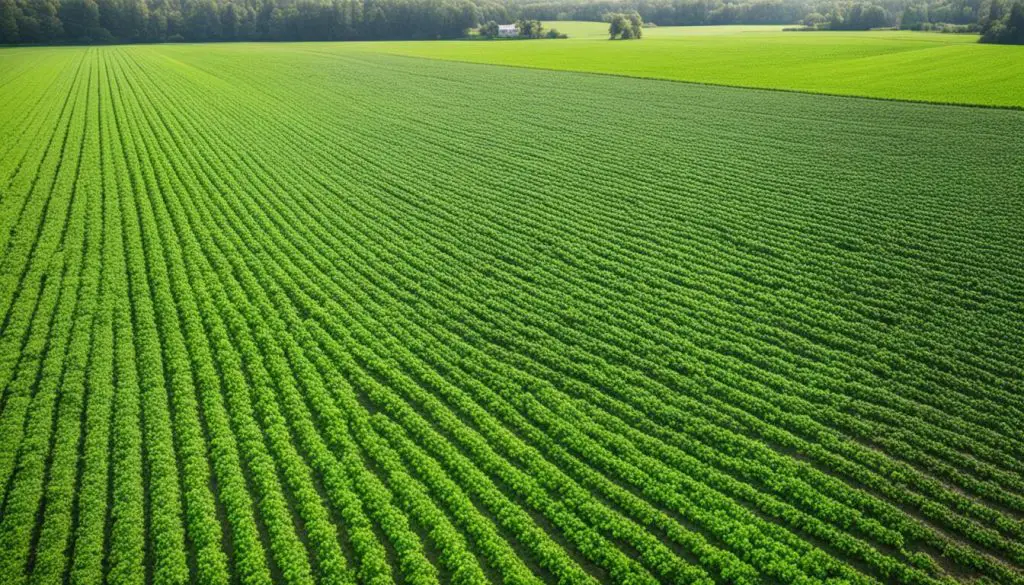Have you ever wondered how altering the sequence of your plantings could revolutionize your farming success? Crafting a strategic crop rotation plan can not only enhance soil health but also mitigate pest and disease challenges, setting a strong foundation for your beginner farm.
Crop rotation serves as a cornerstone in vegetable gardening and sustainable agriculture, providing a systematic approach to planting that ensures both productive yields and ecological resilience. The core idea revolves around the methodical documentation and mapping of the farm layout to determine effective rotational units. Understanding your farm’s unique needs allows you to tailor the plan, optimizing soil nutrition, and striking a balance in pest and disease management.
Essential resources such as “Crop Rotations on Organic Farms” and “Sustainable Vegetable Production from Start Up to Market” can guide you through developing a robust crop rotation strategy, tailored to your specific goals. Let’s delve into how beginner farmers can create a simple yet effective crop rotation plan to set their agricultural journey on the right path.
Key Takeaways
- Crop rotation is crucial for soil health and managing pest and disease pressures.
- Mapping your farm layout and determining rotational units are foundational steps.
- Evaluate field conditions to customize your crop rotation plan effectively.
- Reference trusted resources to craft a comprehensive rotation strategy.
- A systematic approach to crop rotation ensures balanced soil nutrition and sustainable agriculture.
Introduction to Crop Rotation and Its Benefits
Crop rotation is an essential practice in sustainable agriculture, encompassing various strategies for planting different crops in a sequence. Employing crop rotation on your farm not only contributes to effective soil management but also maximizes the crop rotation benefits.
What is Crop Rotation?
At its core, crop rotation involves growing diverse types of crops in the same area over different seasons. This practice helps maintain the balance of nutrients in the soil, supports better nutrient cycling, and plays a critical role in organic farming.
Benefits of Crop Rotation
Implementing crop rotation brings a myriad of advantages to the farming ecosystem. It helps in reducing soil erosion, enhancing water retention, and boosting soil fertility. Notably, the practice lessens the dependency on synthetic fertilizers and pesticides, thereby fostering more sustainable farming methods.
Impact on Soil Health
Crop rotation substantially improves soil health by promoting nutrient cycling and encouraging diverse soil microbiota. This diversification ensures that different crops provide varied nutrients to the soil, enhancing its overall structure and fertility. Consequently, ongoing soil management becomes more efficient and effective.
Reduction in Pest and Disease Pressure
Cycling crops aids in breaking the life cycles of pests and diseases that customarily affect monoculture systems. By varying the plants grown in a specific area, the usual habitats and food sources for pests are disrupted, leading to a natural reduction in their population. This method is a cornerstone of organic farming practices aimed at maintaining a healthier, more resilient crop output.
Steps to Creating a Simple Crop Rotation Plan for Your Beginner Farm

Developing an effective crop rotation plan begins with clearly defining your farm’s goals. Priorities such as soil health, pest management, and profitability should guide your planning process. Each goal can steer your decisions towards the specific needs of your crops and land.
Writing Down Your Goals
The first step in the Crop Rotation Steps is documenting what you aim to achieve with the crop rotation. Whether it’s improving soil structure, managing pests, or maximizing yield, writing down these objectives helps create a focused plan. This strategic approach ensures that each season’s planting aligns with your ultimate farm goals.
Prioritizing Your Goals
After listing your goals, it’s essential to prioritize them. Rank your objectives in order of importance to address the most pressing issues first. For instance, if soil health is your primary concern, focus your crop rotation efforts on incorporating legumes and cover crops that enhance soil nutrients and structure. This prioritization helps streamline Crop Planning and ensures a clear direction.
Listing Your Crops
With goals in place, create a comprehensive list of crops intended for cultivation. Factors such as botanical family, nutrient demand, and harvest periods should inform this list. Organizing crops using Companion Planting strategies can maximally exploit the benefits of natural pest and disease management.
To facilitate Farm Mapping and rotation planning, consider utilizing tables to track crop characteristics. Here’s an example:
| Crop | Botanical Family | Nutrient Demand | Harvest Period |
|---|---|---|---|
| Tomatoes | Solanaceae | High | Summer |
| Carrots | Apiaceae | Medium | Fall |
| Legumes | Fabaceae | Low | Summer/Fall |
By using such tables for Farm Mapping and grouping crops based on their characteristics, you can ensure a well-balanced and productive crop rotation system. This structured approach lays the groundwork for a successful farming plan that meets your unique needs and conditions.
Grouping Crops and Creating Rotational Units
To establish an effective crop rotation plan, it’s crucial to group crops based on their family and characteristics. This process facilitates managing their unique needs and optimizing their potential to enrich soil and manage pests. Here’s how to get started:
Group Crops by Family and Characteristics
Begin by classifying crops according to their botanical families and growth traits. This Crop Grouping approach ensures that similar plants receive the same treatment, leading to healthier and more productive yields. For instance, legumes grouped together can aid in nitrogen fixation, while brassicas may require more intensive pest management.
Using a Farm Map to Plan Rotational Units
Utilize a detailed Farm Map to visualize and organize your farm into structured Rotational Units. Accurate mapping allows for strategic planning of crop placement, ensuring that each unit is allocated appropriately and optimally. Here’s an example of how you might layout your farm:
Determining Rotational Unit Sizes
When determining the size of Rotational Units, consider the space each crop grouping requires, as well as the overall layout of your Crop Rotation Map. Flexibility in unit sizes can be advantageous, accommodating diverse crop needs and field conditions. Regularly assess the performance of each unit and adjust the sizes as necessary to maintain balance and soil health.
Identifying and Managing Field Conditions
Assessing the conditions of your fields is crucial for developing an effective crop rotation plan. By analyzing the existing soil and environmental factors, as well as understanding the historical context of disease and pest occurrences, farmers can tailor their crop placement for optimum results.
Evaluating Soil and Environmental Conditions
When it comes to evaluating soil and environmental conditions, several factors need to be considered. These include moisture levels, temperature fluctuations, and soil texture. Understanding these conditions helps in enhancing soil resiliency, ensuring your crops have the ideal growing environment.

Considering Disease and Pest Histories
A thorough review of past disease management and pest control efforts is essential. Analyzing historical data on disease and pest outbreaks in your fields allows for strategic crop selection and rotation lengths. This approach not only aids in combating recurrent issues but also ensures crops are less susceptible to specific environmental conditions.
| Field Conditions | Factors to Evaluate | Benefit |
|---|---|---|
| Soil Moisture | Water Retention Capacity | Improves Soil Resiliency |
| Temperature | Seasonal Variations | Supports Crop Suitability |
| Soil Texture | Composition Analysis | Enhances Nutrient Management |
| Disease History | Past Incidences | Efficient Disease Management |
| Pest History | Recorded Outbreaks | Effective Pest Control |
Implementing Your Crop Rotation Plan
Implementing a crop rotation plan effectively starts with putting your farm’s mapped divisions and crop groups into action. Consistently recording plantings and harvests is essential for tracking crop rotation sequences and maintaining a robust plan. This detailed documentation ensures adherence to rotation goals while allowing for necessary adjustments driven by unforeseen weather patterns or crop performance variations.
Flexibility within your crop rotation implementation is crucial for optimizing soil health and refining your pest management strategy. As you proceed, continuous record-keeping will provide valuable insights, helping to adapt your rotation strategy to enhance overall soil health and manage pest populations more effectively.
Employing a crop rotation plan successfully requires a combination of foresight and adaptability. By committing to consistent documentation and remaining open to necessary adjustments, you will support the sustainable growth of your farm. Effective crop rotation implementation will lead to long-term improvements in soil health and provide a resilient pest management strategy.
Leveraging Crop Rotation for Sustainable Agriculture
Crop rotation stands as a cornerstone in the quest for sustainable agriculture. This age-old farming technique helps bolster long-term farm health by enhancing soil fertility and minimizing the need for synthetic inputs. By optimizing crop rotation, farmers can not only achieve better yields but also embrace the principles of organic farming.

Integrating crop rotation advantages into your farming practices fosters a more resilient agricultural system. This method supports a balanced ecosystem, minimizing pest and disease pressures naturally. Additionally, rotating crops ensure diverse soil nutrition, leading to robust and healthy plant growth.
By planning and implementing a proper crop rotation strategy, farmers can secure greater economic stability. The diverse crop cultivation not only enriches the soil but also mitigates the risks associated with monocropping. Embracing this technique can pave the way for a more sustainable and environmentally friendly farming future.
Conclusion
Embarking on the journey of creating a crop rotation plan is a commendable step towards achieving farm planning success and implementing agricultural best practices. It’s evident that this approach not only fosters soil health and fertility but also significantly reduces pest and disease pressures. For beginner farmers, a well-thought-out crop rotation plan serves as the cornerstone of sustainable agriculture, providing a robust framework to enhance productivity and environmental stewardship.
By following the outlined steps—from understanding the benefits of crop rotation to grouping crops and managing field conditions—farmers can create a tailored plan that caters to their specific land and crop requirements. Effective planning and documentation paired with flexibility in implementation ensure the plan adapts to unforeseen challenges such as unpredictable weather or crop performance variations. This approach not only safeguards the farm’s immediate yield but also promotes long-term soil sustainability.
The path to farming success is paved with careful planning and proactive management. Incorporating a crop rotation strategy into your farming operation allows you to create a resilient, diverse, and productive system. By committing to this time-honored practice, you’ll not only improve your farm’s output but also contribute positively to the environment. Adopting crop rotation is a crucial step towards sustainable agriculture and a thriving, profitable farm. The benefits are clear, and with diligent application, your farm’s future can be both productive and eco-friendly.
Leave a Reply